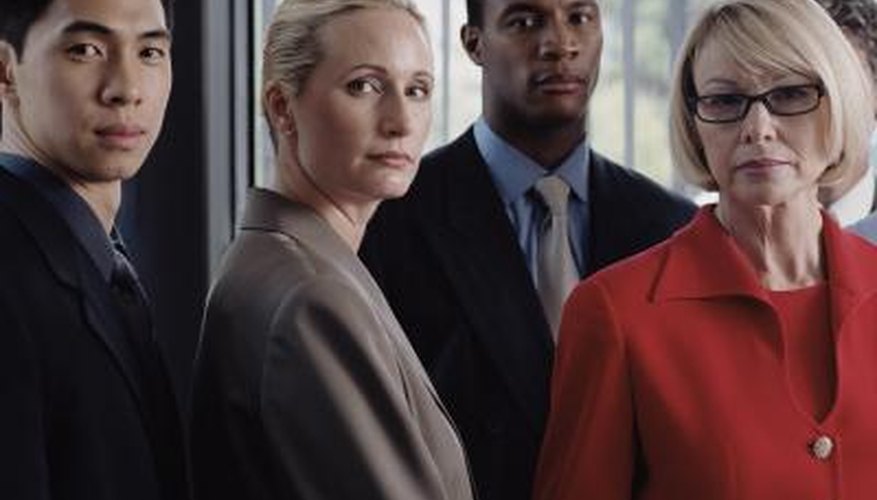Leaders are able to influence and guide people under them, so an organisation can become more effective in achieving its goals. Styles of leadership are affected by external factors, such as the organizational environment, demographics, staff characteristics, resources, economic and political factors, technology and the culture of the organisation.
Organizational Environment
Organizations have their own particular work environment with its own values, which is a legacy of past leaders, as well as current leadership. These values are the care the organisation has for investors, customers, staff and the community, and they determine how the business will be managed. Goals, values and concepts that define products or services make up the personality of the organisation.
Organizational Resources
Leaders are dependent on organizational resources, such as staff, technology, finances and physical resources to achieve their goals. The success of management depends on how well resources are acquired and used.
Employee Roles
When an employee takes on a role in an organisation, his position is defined by the tasks and responsibilities he must perform in relationship with others. Employees have varying levels of maturity in approaching tasks and relationships that impact the style of leadership needed to guide them. Employees also affect the organisation by their work ethic and personal values. Roles have pitfalls and roadblocks that leaders must recognise and reduce in order to help staff accomplish their tasks.
- When an employee takes on a role in an organisation, his position is defined by the tasks and responsibilities he must perform in relationship with others.
- Employees have varying levels of maturity in approaching tasks and relationships that impact the style of leadership needed to guide them.
Organizational Culture
The culture of an organisation is a combination of its founders, past and current leaders, history and crises. Culture is difficult to change, because it is the result of long-held information and formal systems, traditions, customs and rules that represent the self image and shared expectations of the organisation. Established rites, such as rituals, routines and a set way of doing things impacts company norms, such as how a worker can be in good standing and how a worker can respond appropriately for various circumstances.
Sociological Factors
Leaders need to understand the demographic make-up and cultures of the clients of the organisation and trends in the marketplace to design products and services for particular populations.
Economic and Political Factors
Leaders must educate themselves on their suppliers, customers and competitors to determine the economic and current political factors that affect the marketplace. These factors influence how leaders accomplish their goals.
Technology
Technology can dramatically change the business environment, overnight. Leaders must adjust their management styles to help the company adapt to technology. Research and development help leaders to create innovative new techniques that make operations easier.
